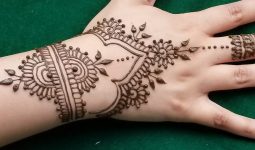Traditional Japanese clothing and lifestyle changed drastically after WWII. This was when people moved from the countryside and villages to the cities to make a living. Traditional Japanese clothing, or wafuku, as it’s called, is based around kimonos.
Kimonos are traditional Japanese clothing and come in various types and accessories.
Before WWII, wafuku or kimonos were everyday wear, though today, they are worn on special occasions such as the Shichi-Go-San festivals, weddings, or graduation ceremonies.
Wafuku, or traditional Japanese clothing, varies depending on the person’s gender, age, occupation, and occasion. Traditional Japanese clothing is comfortable and sophisticated.
The Japanese wear traditional Japanese clothing both casually and formally. Both men and women can wear it in various styles, designs, and elegant colors.
You can get an item of Traditional Japanese clothing through a Japanese online retail store.
This article will discuss some traditional Japanese clothing;
Traditional Japanese Clothing
1. Kimonos
First on the list is Kimonos. As mentioned earlier, traditional Japanese clothing is centered on Kimonos.
Kimonos are made of silk and have oversized sleeves and covers from the shoulders to the heels, tied with a wide belt.
Nowadays, linen, hemp, polyester, rayon, and cotton are used to make kimonos. Additionally, kimonos mean “a thing to wear” in Japanese.
Kimonos are at-shape gowns that cover the entire body from shoulders to heels. Initially, they were worn with hakama, but nowadays, they are worn alone, tied with only a belt called an obi. Both men and women wear kimonos.
Compared to modern Western clothing, kimonos are restrictive in movements. Furthermore, traditionally worn kimonos come in 1 to 20 layers for fashion and warmth.
The number of layers is determined by the formality of the event, age, marital status, season, and wearer’s social status.
Kimonos are greatly appreciated even in the Western world because of their flattering and body-hugging silhouette.
2. Yukata
Secondly, Yukata is a more casual version of a kimono worn in the summer or at a ryokan. Japanese make yukata using polyester and cotton.
Yukata means “bathing cotton.” Based on this, It is relatively easy to wear. It is worn without undergarments and fastened with only an obi, making it lighter than traditional kimonos.
Besides, yukata are often brighter and significantly cheaper than traditional kimonos, making them popular souvenirs. Both men and women wear it.
3. Furisode
Thirdly, furisode is a kimono worn by young, unmarried ladies. Furisode means “swinging sleeves” in Japanese. It comes in very bright colors and dramatic designs.
They are mostly worn on special occasions by ladies who have come of age. In addition, furisode is mostly antiques passed down through generations; women rarely wear them, so new ones are rarely bought.
4. Haori
Haori is similar to kimono. It is worn by men, especially those in the warrior class. Haori is an overcoat worn on top of a kimono to protect men against cold.
It looks more like a jacket than a full robe. Haori is worn to symbolize wealth and status and also serves as an armor covering.
However, in recent years, Haori was used as a work uniform for classical Japanese theater and worn over a yukata in a ryokan.
In addition, during the Sengoku period, men started wearing sleeveless haori variations to cover their armor-like tabards in Europe.
However, in the 19th century, women started wearing haori as a statement style piece, and Geisha started a fashion movement.
5. Hakama
Hakama is a skirt-like pant worn with a kimono. Initially, hakama was for samurai men and people who were participating in Shinto rituals.
Over time, women wear hakama on special occasions such as graduation, Japanese swordsmanship (kendo), Japanese archery (kyudo), aikido, and other martial arts. Additionally, hakama comes in two types.
First, the undivided andon bakama looks like a long pleated skirt, and the divided umanori means “horse-riding hakama” in Japanese.
The divided umanori looks like loose-fitting pants. Hakama is a formal, traditional Japanese clothing.
6. Hanten
Hanten is similar to haori. During the Edo period, only a certain social class wore haori. However, Hansen is worn by everyone.
Hanten is a cotton-padded short winter coat. Made for warmth, along with a tailored collar. Both men and women wore a hanten over a kimono.
Hanten is very simple with a minimal design, which means it is a very flexible piece of clothing that could be worn as a jacket or with modern-day clothes.
7. Happi
Happi is also a short coat like the Hanten and haori. However, happi is more casual. The back of a happi is adorned with a crest.
Because of this, it is a family crest. Only Japanese house servants wore happi. However, in recent years, happi has become worn during a festival.
Happi is used to identify people who belong to the same social groups, such as Mikoshi team members, and it usually comes with a matching headband.
Furthermore, happi usually comes in plain colors such as deep blue, indigo, brown, red, black, or white.
8. Samue and Jinbei
Samuel and Jinbei are traditional Japanese relaxing clothes. They’re constructed of cotton, linen, or hemp and come in a variety of colors, usually indigo, blue, brown, or green.
Samue and Jinbei come in a simple matching pair of pants and a top. The samue and jinbei are very similar, the primary difference being that the pants of the samue are longer, up to the ankle, while the pants of jinbei are shorter, under the knee.
Originally, only the Buddhists wore samue; even today, they wear it when they are practicing mindful work known as samu, which includes cooking, cleaning, outdoor labor, etc.
However, farmers also wear the samue today to work in their gardens. However, jinbei is worn by everyone in society.
Another difference between the samue and jinbei is that a jinbei is knitted with yarn around the shoulder parts for better ventilation.
While the samue is worn every season, the jinbei is summer clothing. A jinbei is more prevalent among males and has a more decorative design than the simple design of a samue.
9. Obi
Obi is a traditional sash or belt that holds the kimono. Although it doesn’t get much attention, it stands out when styled right. Obi is tied in the rear and wrapped around the waist.
As most obi are too ornate and thick to function as belts, kimonos have internal belts. Depending on the occasion, there are various styles of obi.
It has different widths, lengths, patterns, materials, and knot styles. Tying obi is an art. This practice has traditionally been passed down through generations and is even taught in classes today.
Also, both men and women wear an obi; while a female’s obi can be 30 centimeters wide and decorated with colorful beads, a man’s obi is more straightforward.
They are usually just 10 centimeters wide without decorations or fancy styling of knots.
10. Zori
Zori is one example of traditional Japanese clothing influencing the Western world. It inspired flip-flops after American soldiers in Japan brought Zori home after WWII.
Zori looks like flip-flops. They are flat sandals with a thong fitting between the big toe and the rest of the toes.
Traditionally, zori is made from ice straw, cloth, or lacquered wood. However, nowadays, they are made from plastic, rubber, or leather.
Zori is worn with tabi, a traditional Japanese-toed sock. Tabi socks have a divided big toe, making them easy to wear and take off.
In addition, both genders wear zori in casual and formal settings. Like all traditional Japanese clothing, the designs for females are more flashy and elaborate than those for men.
The women’s Zori has a raised heel, like a wedge, while the men’s design always has a flat profile.
11. Tabi
Tabi is a traditional sock worn; it is a shoe-sock hybrid. Both men and women wear tabi for different purposes and occasions.
The tabi is like a mitten on the foot, with a separation between the big toe and the other toes.
Tabi makes it easy to wear a zori or geta with a kimono. Tabi is usually in white. However, there are tabi of various colors and designs nowadays.
12. Nagajuban
Nagajuban is worn under the kimono. The purpose of the nagajuban is to keep the kimono clean.
Besides, kimonos are hard to clean, mostly if they are made from silk, so the nagajuban helps to separate the kimono from the body.
They prevented sweat from entering the kimono and kept it clean. Nagajuban is only visible at the collar, where a thin strip of white is found.
13. Maekake
Maekake means “front-worn” or “front-hang” in Japanese. It is a traditional Japanese apron worn on the hips and tied at the front—initially, only craftsmen and staff members wore maekake.
Maekakek is usually dyed indigo. Because of its thick cotton, it is sometimes used as shoulder padding when carrying heavy loads.
14. Tanzen
Tanzen is a type of kimono worn during winter. Because of its thick padding, men predominantly wear Tanzen during winter.
Tanzen is shaped like a regular kimono.
The only difference is that instead of silk, Tanzen is made from thick cotton and is generally in darker colors and plainer patterns that suit men.
15. Michiyuki
Michiyuki means “traveling” in Japanese. It is like a windbreaker, worn over a kimono to provide protection and warmth when traveling.
Michiyuki is similar to haori in that it is worn over a kimono. However, michiyuki has a very simple design with few or no patterns.
One major way to identify a michiyuki is the square-shaped neckline fastened with buttons at the front.
Also, michiyuki is always worn closed and on the outside of the garment (kimono).
16. Fundoshi
Fundoshi is a traditional Japanese clothing item that influenced the Western world after WWII. It led to the creation of men’s underpants.
Fundoshi is a traditional Japanese men’s undergarment that comes in different styles. The most famous variation now looks like a loose apron in front, often seen at Hadaka Matsuri.
Careful consideration of these traditional Japanese clothing shows that they have been incorporated into a modern Western wardrobe.
For example, kimonos are trending internationally, and people wear socks and flip-flops like Zori and Tabi.
Careful consideration of this traditional Japanese clothing is like a modern Western wardrobe. For example, kimonos are trending internationally, and people wear socks and flip-flops like Zori and Tabi.








